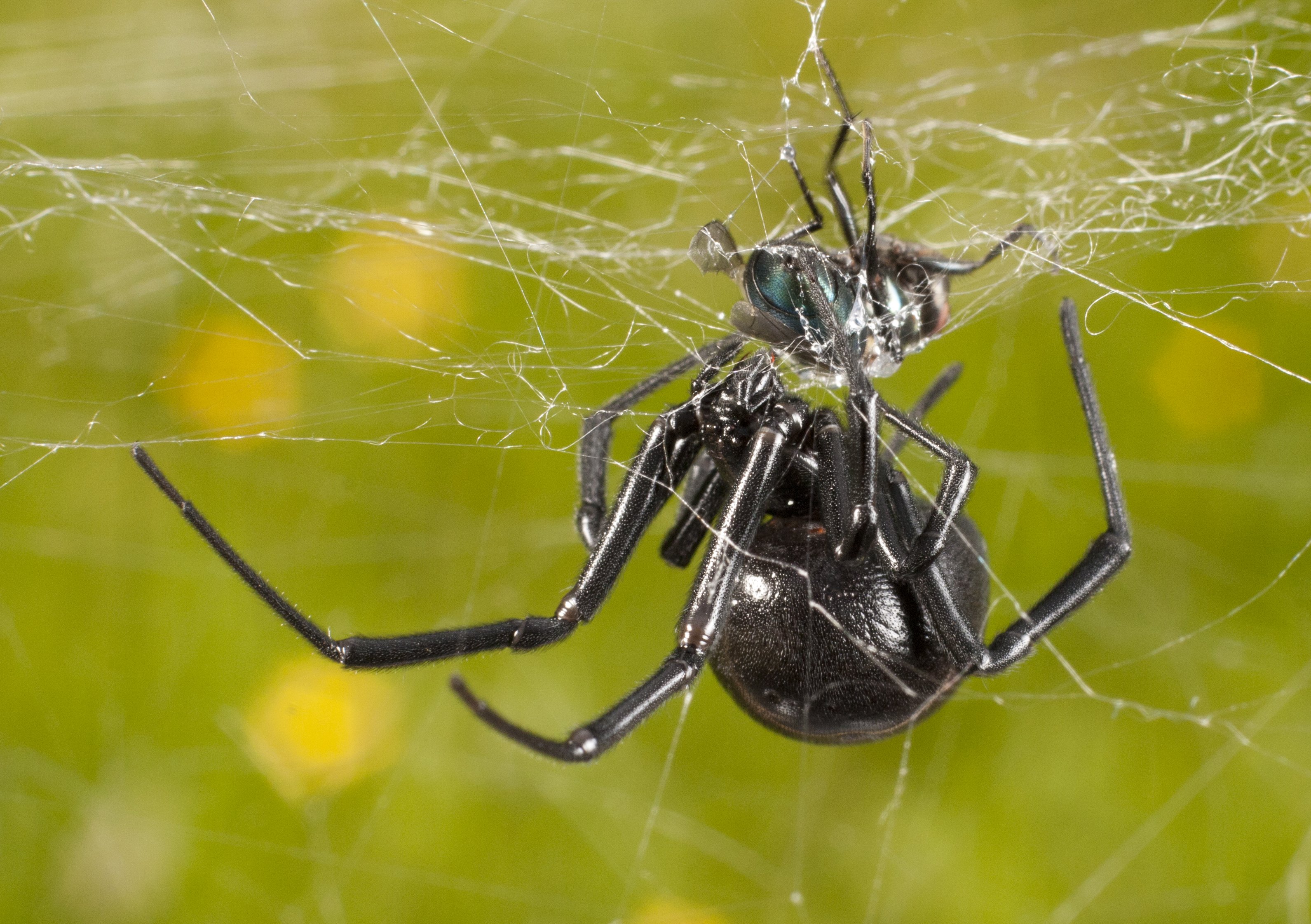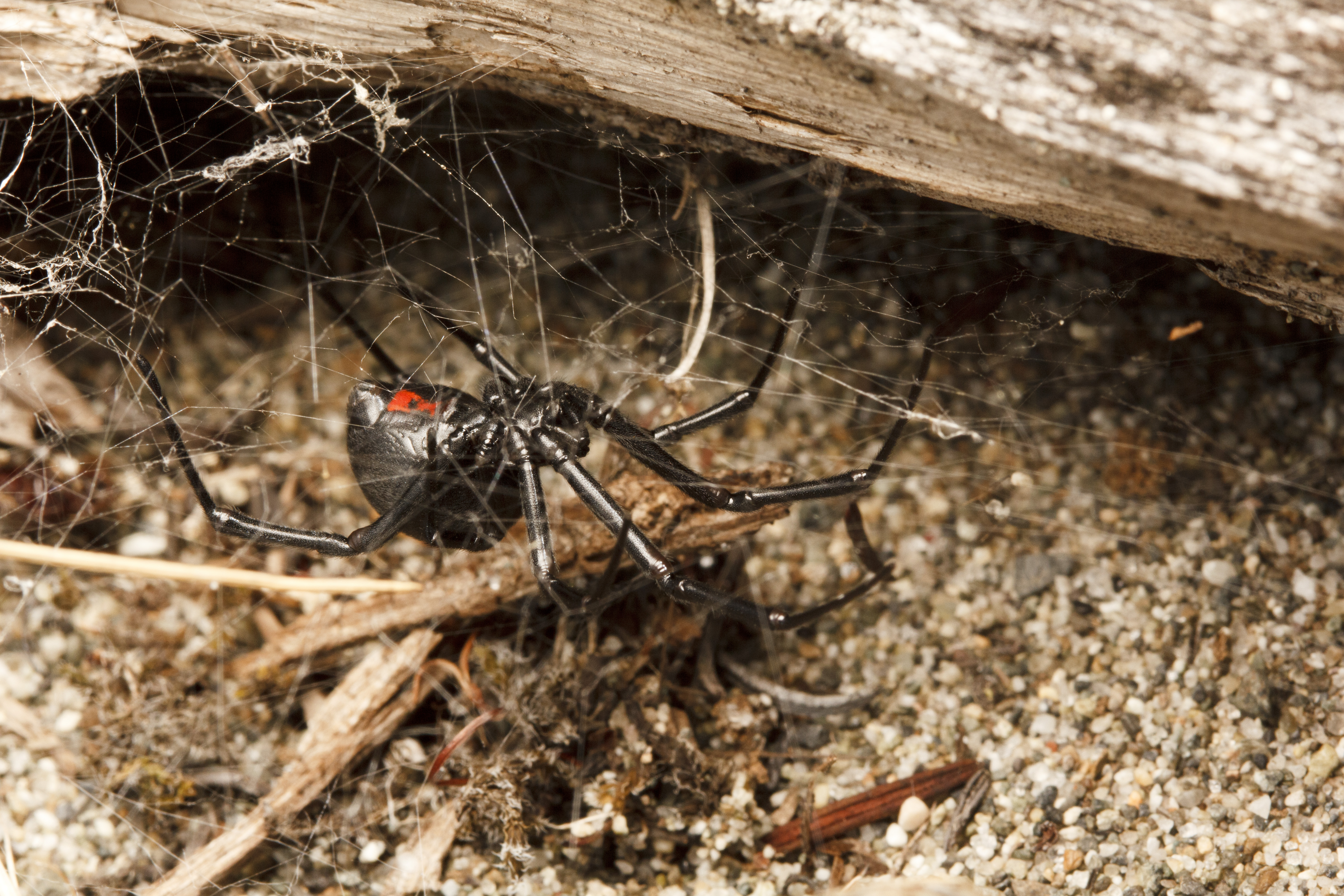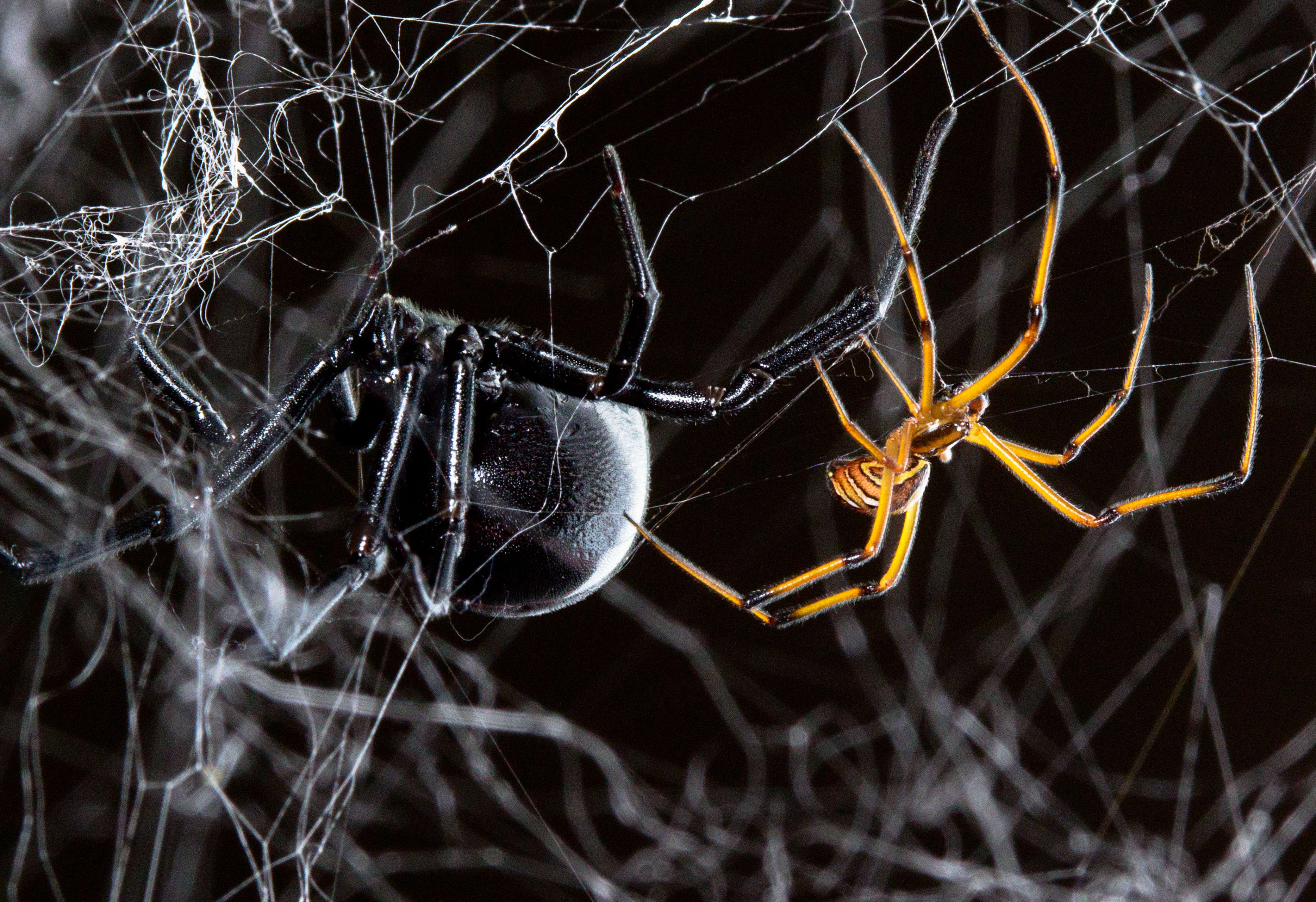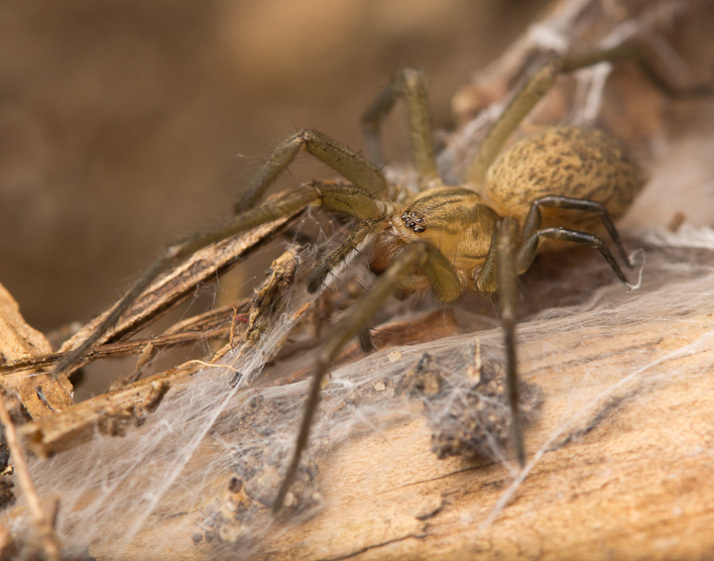A comparison of the vibrations transmitted by courting males and ensnared prey in two web-building spider species.
Today, I am excited to publish my first blog post about some of my own spider research! Our paper, “A meal or a male: the ‘whispers’ of black widow males do not trigger a predatory response in females”, has just been published in Frontiers in Zoology (freely available online).
This study is part of the PhD work of my friend and collaborator Samantha Vibert. In fact, we did some of the data collection and analysis for this paper during my very first semester in our lab, when I was working as an undergraduate research assistant. That was when I first began to really look closely at spiders and their incredible behaviour. My experience working with Sam that summer sparked my passion for the complexity and beauty of all of the various aspects of the private lives of spiders, which so often go unnoticed by humans.
Here is a plain-language summary of the paper, written with Samantha Vibert, and with photos by Sean McCann:
Spiders are fascinating but largely overlooked creatures, with sophisticated signalling systems involving chemical, vibratory, tactile, and in some species visual communication. A spider’s web is essentially an extension of her exquisitely tuned sensory system, allowing her to quickly detect and respond to vibrations produced by entangled prey. Not only is the web a highly effective prey-capture device, but it is also the dance floor on which prospective mates must demonstrate their desirability. The first moments after a male spider steps onto a female’s web may present a great risk, since spiders are often cannibalistic. We were interested in how a dancing male spider avoids a potentially deadly case of mistaken identity. One way that he might deal with this challenge is by transmitting vibratory signals that are very different from the vibrations produced by ensnared prey.

Spider webs are highly effective prey-capture devices, so how does a courting male avoid the fate of flies like this one?
Our study species were the western black widow and the hobo spider, which are both found in British Columbia.

A western black widow (Latrodectus hesperus) hanging from her tangle-web under a log at Island View Beach on Vancouver Island.
Black widows are in the family Theridiidae, and build complex, three-dimensional tangle-webs, while hobo spiders (family Agelenidae) build dense sheet-webs. Female black widows are much larger than males, while hobo spider males and females are closer in size.
The purpose of our study was to describe some of the vibratory courtship signals of males in these two species, and to determine which aspects of these vibrations might allow females to discriminate between prospective mates and their next meals.
First, we recorded the vibrations transmitted through the web by courting males in both species using a laser Doppler vibrometer. At the same time, we video-recorded the male’s courtship behaviour. This allowed us to describe and analyze the different kinds of vibrations that were transmitted through the web during specific behavioural elements of each male’s courtship display. We then recorded the vibrations produced by the struggles of two types of common prey insects (house flies and crickets), on both black widow and hobo spider webs.
We found that male and prey vibrations differed more in the black widow than in the hobo spider. Hobo spider male vibrations contrasted with prey vibrations only in terms of their duration – the courting male moves around almost continuously on the female’s sheet web, while prey struggles are generally brief and intermittent. Black widow male courtship vibrations were also longer than prey vibrations on tangle webs (for the same reason), but they were also distinctive based on their generally lower amplitude and higher dominant frequencies.
To our surprise, we also found that most courtship behaviours in both species did not generate the kind of very stereotyped, complex and distinctive “songs” that have been reported in several other spider species. These species tend to court on substrates like leaf litter and plants, which most likely transmit vibrations quite differently than webs. Some male orb-weavers also produce highly rhythmic patterns during their vibratory courtship displays. So our finding leads us to wonder to what extent web architecture and complexity might constrain the transmission of the male courtship signals, and therefore the design of these signals.
One very interesting exception to the rule turned out to be the vibrations generated by the male black widow’s abdomen tremulations (an up-and down waggle of the abdomen, performed as the male hangs upside down from the female’s web). These vibrations were always very distinct from anything produced by prey: they were long-lasting and of very low amplitude, like a constant humming.
Here’s a short video of a male western black widow vibrating his abdomen on a female’s web (Supplemental File 1 from Vibert et. al 2014):
To learn more about these particularly stereotyped, ‘whisper-like’ male signals, we built our own custom web vibrator by modifying a loudspeaker. We were then able to play recorded vibrations of a male’s abdomen tremulation or a fly’s struggles back to females and observe their responses. Black widow females were much less likely to respond aggressively to vibrations played back at the “whisper-like” low amplitude of male abdomen tremulation, but attacked when we turned up the volume to levels typical of prey vibrations. This was the case regardless of which type of vibration we played. So we speculate that the males vibrate their abdomens either to avoid triggering a female’s predatory response, or even to turn it off.
Is it possible that the females that didn’t attack low-amplitude vibrations simply couldn’t detect them? We don’t think so. First, spiders are specialists when it comes to detecting even faint vibrations, and second, some females actually responded with courtship behaviour: abdomen ‘twitches’ which are similar to the male’s abdominal movements, but more emphatic. These abdomen twitches undoubtedly transmit their own vibrations through the web, and it would be very exciting to further investigate the female’s side of the vibratory ‘conversation’ during courtship.
Abdomen vibration seems to be a relatively common type of courtship behaviour and has been described in several spider families (‘abdomen wagging’ in an orb-weaver, and what has recently been described as ‘twerking’ in jumping spiders are a couple of examples). If indeed the “whispers” caused by these vibrations are involved in lowering female aggression, this might explain why such behaviour is fairly common among spiders.
The orb-weaver Argiope keyserlingi’s courthip also involves abdomen vibration, but in this species another vibratory signal was recently implicated in reducing the risk of cannibalism. The ‘shuddering’ of a courting male delays the female’s predatory response. One of the common features of black widow abdomen tremulation and these ‘shudders’ is that they are the first courtship behaviour performed by males after they enter a female’s web.

A male western black widow courting a large, potentially dangerous female. Abdomen vibration is performed on and off throughout the male’s courtship display, starting just after the male steps onto the web, and featuring prominently during attempts to approach and mount the female.
Very little is known about the kinds of vibratory courtship signals that male web-building spiders transmit to females through their webs, except for in orb-web weaving species. We hope that this new information about vibratory communication in tangle-web and sheet-web building spiders will contribute to better overall understanding of the function and evolution of web-borne vibratory courtship signals.
References:
Vibert, S., Scott, C., and Gries, G. (2014). A meal or a male: the ‘whispers’ of black widow males do not trigger a predatory response in females. Frontiers in Zoology, 11(4). doi:10.1186/1742-9994-11-4
Wignall, A. E., & Herberstein, M. E. (2013). The Influence of Vibratory Courtship on Female Mating Behaviour in Orb-Web Spiders (Argiope keyserlingi, Karsch 1878). PloS one, 8(1), e53057. doi:10.1371/journal.pone.0053057
Wignall, A. E., & Herberstein, M. E. (2013). Male courtship vibrations delay predatory behaviour in female spiders. Scientific reports, 3. doi:10.1038/srep03557

